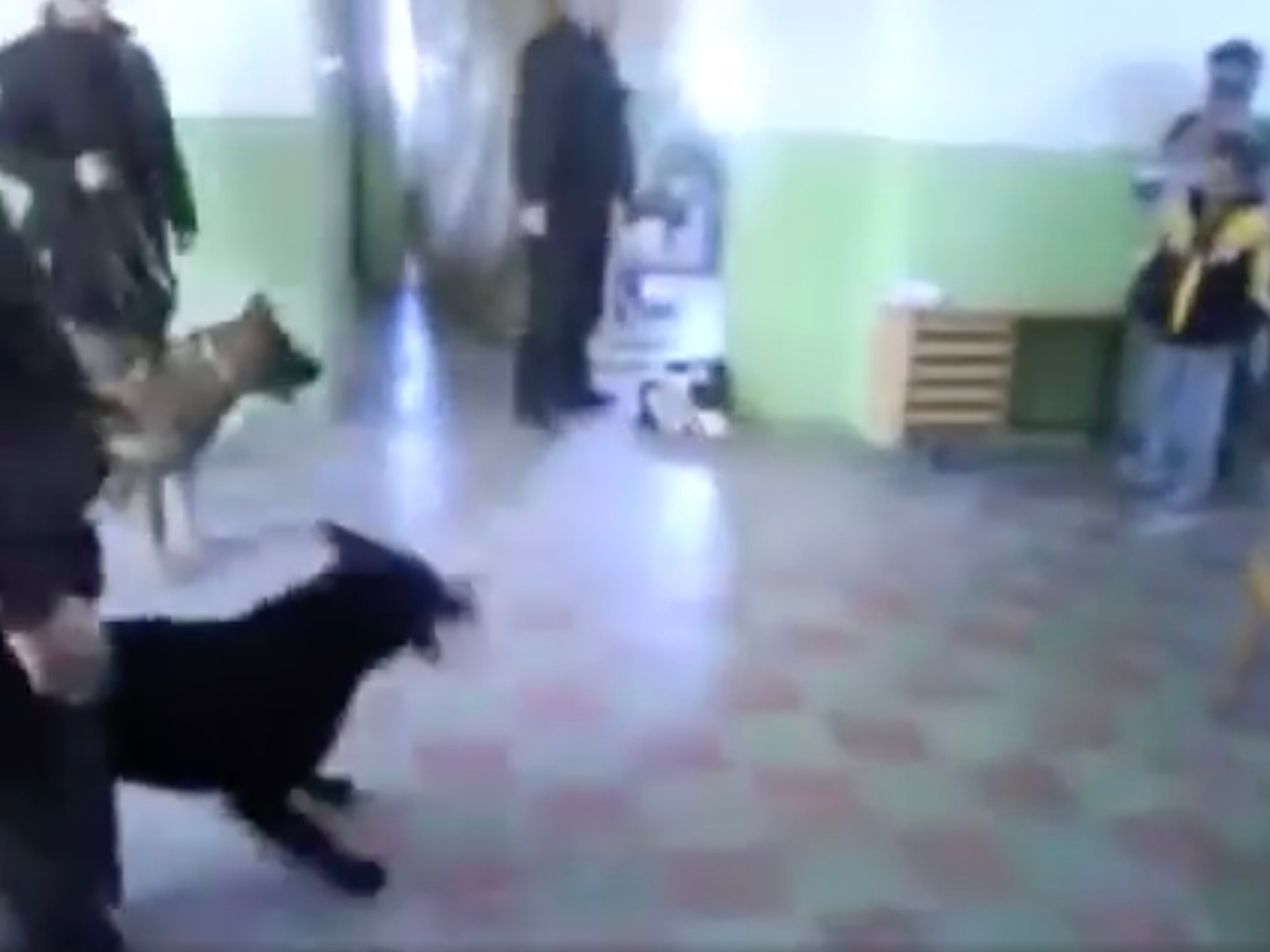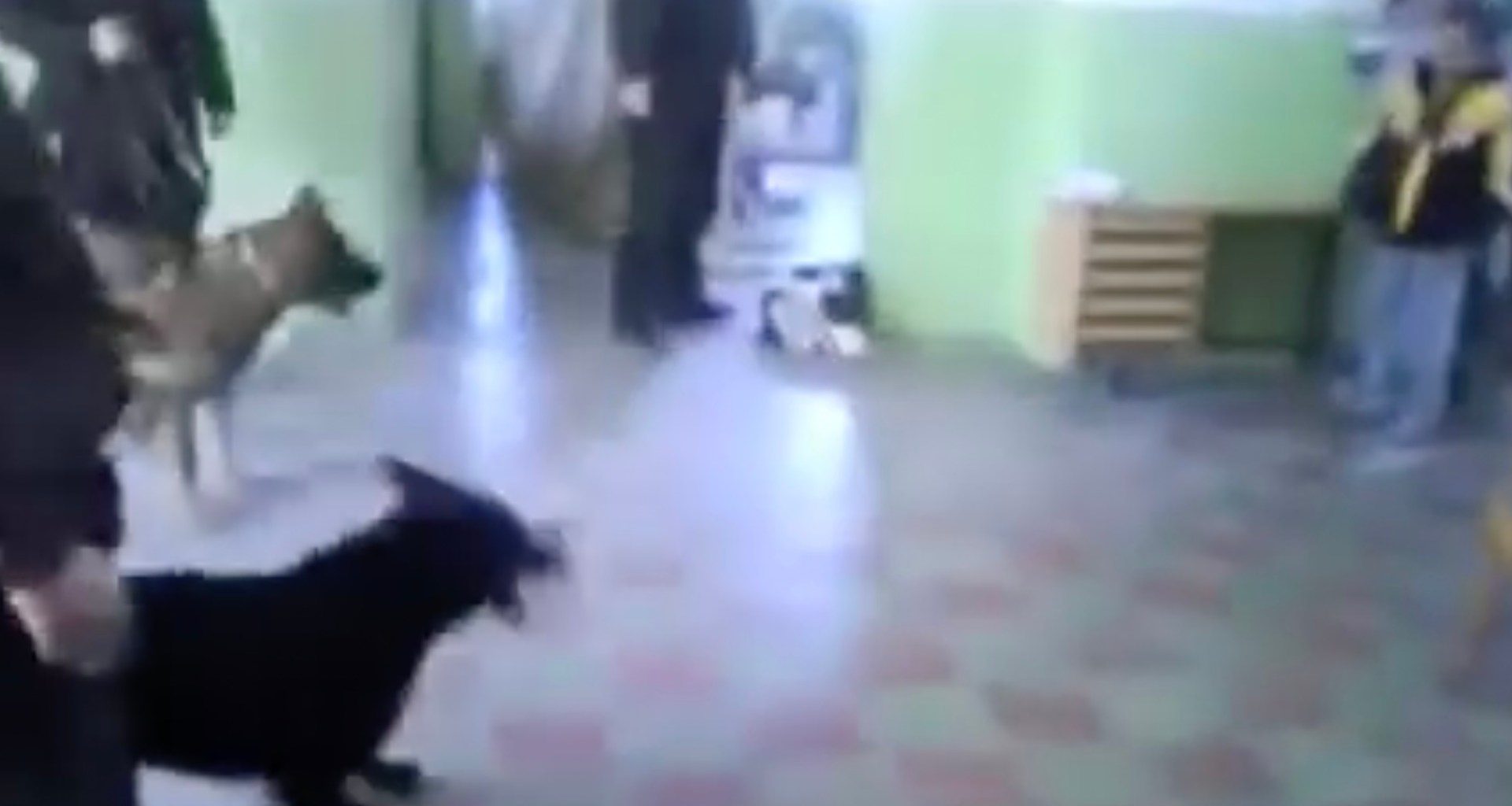
On February 22, the City Court in the eastern Slovakian town of Kosice acquitted 10 police officers accused of forcing six Romani children to beat each other up on camera in a police station in March 2009. It was the third time the court had acquitted the defendants after the Constitutional Court of Slovakia ordered the 15-year-old case to be re-examined last year.
In various video recordings from the incident, the police officers were seen shouting racial slurs at the Romani children, boys aged 11 to 17, and ordering them to strip naked and stand with their hands behind their heads. They were also seen threatening to unleash on the children unmuzzled dogs, which allegedly eventually bit three of them. In one video clip, an officer put his gun to the head of one of the boys and forced him to kiss his shoe.
Officers sent the videos they recorded on their mobile phones to their friends and colleagues, leading to the evidence eventually being leaked to the press and a criminal complaint being filed (with legal representation from the Center for Civil and Human Rights).
Despite being presented with disturbing video footage, and hearing testimony from the victims, the City Court of Kosice threw out the case twice citing “inconclusive evidence”.
In her first judgement on the case issued in 2015, City Court Judge Daniela Blazovska described the evidence as “insufficient to establish guilt or to reach an indisputable conclusion that the act, as presented by the prosecutor, even occurred”. She argued that the perpetrators could not be visually or audibly identified from the video evidence, meaning the only evidence the court could rely on was the testimony of the six victims.
Considering the young age of the victims at the time of the incident, the terror they undoubtedly experienced throughout the ordeal, and the time that had elapsed between the abuse and the court hearings, their testimonies were often contradictory. As the case dragged on, fewer of them wanted to testify in the subsequent court hearings and those that did make statements that were even more muddled than before due to the passage of time.
After two acquittals on similar terms, the case was taken to the Constitutional Court. In its May 2023 decision, it noted that the constitutional rights of the victims had been violated during the judicial proceedings and ordered the case to be re-examined at the City Court level.
Judge Blazovska, who proceeded over the first two dismissals, was assigned to oversee the new trial. On February 22, she acquitted all police officers – nine men and one woman – once again, citing insufficient evidence like before. The public prosecutor has already filed an appeal against this latest judgement so the case will appear before the county court in Kosice again soon.
The February judgement from the Kosice City Court was the second time in less than six months that a court had dismissed a case involving police brutality against Slovak Roma despite video evidence.
In September 2023, the European Court of Human Rights (ECHR) dismissed a case against Slovak police officers who were filmed attacking elderly women, people with disabilities and children during a police raid on a Romani community in Zborov in 2017.
The Zborov case was taken to the ECHR, as in the Kosice case, after the Slovak judicial system dragged its feet in prosecuting the officers despite overwhelming video evidence.
The ECHR’s decision to dismiss the case was a huge blow to human rights lawyers trying to advocate for and deliver justice to Romani victims of police brutality in countries with structurally anti-Romani national judiciaries, like the Slovak Republic.
Indeed, the ECHR decision made clear that in European courts, even video evidence will not necessarily be considered a smoking gun in cases of police brutality against Roma.
However, video evidence proving insufficient to secure a conviction in a case involving racist violence against Romani people is not a new phenomenon in Europe.
In the Czech Republic, video evidence of the 2021 police killing of Stanislav Tomas (as well as evidence from the ombudsman that the police had lied about the chain of events leading to his death) did nothing to convince the Czech legal system of the guilt of the attending officers. The case, dubbed the Romani George Floyd because an officer kneeled on the back of Stanislav’s neck before he died, was tried by public opinion as much as it was before the courts.
Before the results of the autopsy had even been released, Prime Minister Andrej Babis made a public statement in support of the police officers accused of causing Tomas’s death and commended them on their conduct. The prime minister even noted that a “normal person” would never have found themselves in the position Tomas did. The case is now before the ECHR after the Czech Constitutional Court dismissed an appeal to prosecute the officers involved.
In a similar case, the 2016 death of a Romani man in a pizzeria in the Czech town of Zatec at the hands of an angry mob was partially filmed by a witness. The Romani man, having been nearly beaten to death by four customers and later the police themselves, can be heard crying in pain while an officer pins him to the ground in the video. He is known to have died moments after that video was filmed. The autopsy, as in the case of Tomas, concluded that the cause of death cannot be attributed to third-party actions. Despite the video evidence of the assault, no police officers or civilians involved in the incident have been charged with a crime.
In Romania’s Bolintin-Vale, witnesses filmed police officers beating and racially abusing Roma as they lay face down in the dirt with their hands tied behind their backs in April 2020. The screams of one victim are clearly audible as four officers set about him, two striking him all over his body, and two others beating the soles of his bare feet.
The victims – eight Romani men and one 13-year-old boy – were beaten for about 30 minutes and threatened with repercussions if they made any complaints. Much of the assault is caught on video. One police officer can be heard using racial slurs and threatening the person filming the incident. The criminal investigation remains open nearly four years later without any officers being successfully prosecuted.
These cases of police brutality, all caught on camera but denied justice, speak to a rotten system which goes beyond law enforcement and extends to a criminal legal system that is structurally racist towards Romani people. While Black Lives Matter brought about a change in how Europe talks about racist police violence, the gains made seem to be fast disappearing.
The supposed democratisation of evidence gathering through the filming of police discrimination already seems to have lost its impact for a Europe desensitised to racist suffering. We live in an increasingly brutal world; one where human rights violations stack up by the day and post-truth political rhetoric denies facts before our very eyes. In this context, some shaky footage of Roma being tortured and killed on camera does little to prick societal consciousness or sway institutionally racist judicial systems.
Europe is facing an access to justice crisis, one that has been building for some time. When an entire judicial system can wave away video evidence of brazen brutality carried out by racists who have vowed to protect and serve the public, the ramifications go beyond Roma. Police impunity, guaranteed by a structurally racist judicial system, affects every underclassed person in Europe; anyone who cannot afford the best legal representation.
As we approach a choke point for the rise of far-right politics in Europe with this summer’s European elections, the access to justice crisis has consequences for everyone. If the judiciary, a pillar of our democracies, is unable to carry out its function and deliver justice to victims even when provided with blatant video evidence of the crime, it is a worrying omen for the fate of democratic societies considering the direction of the current political winds.
In Slovakia, the rot that has existed for some time in the criminal legal system is becoming more and more obscene with each case of police brutality. The children from the video in Kosice police station, who were humiliated and abused for police officers’ entertainment, are now adults (the oldest will be in their 30s by now) and still awaiting justice.
The farce of their case will continue for who-knows-how-long in the court where it originated over a decade ago. Human rights activists often say that justice delayed is justice denied, but that assumes that eventually the truth will prevail. Increasingly for Roma, justice truly is blind.
The views expressed in this article are the author’s own and do not necessarily reflect Al Jazeera’s editorial stance.
Read More: World News | Entertainment News | Celeb News
Aljazera







